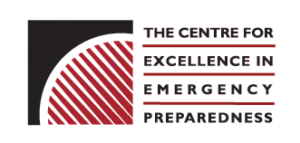Editor’s Note: Dr. Carl Jarvis is an Emergency Medicine Physician, and a director for the Centre for Excellence in Emergency Preparedness (CEEP). Nationally, CEEP’s mandate is to support and inform structures and processes in ensuring an standard of excellence in health emergency preparedness. Most recently, the organization has taken to addressing the growing opioid crisis within our country, here Dr. Jarvis helps to provide some further insights to first line providers.

Opioid crisis: why is it a problem now?
The opioid crisis is appropriately beginning to garner an significant amount of attention in healthcare circles, as well as in public media. Considering how we got to this position is likely multifactorial, with physicians desiring to treat pain, pharmaceutical marketing, addictions, and open access to information and contraband (i.e.: the internet).
The Globe and Mail recently reported that “we are experiencing a unique iatrogenic public health crisis. In Ontario there are 500 deaths per year from overdose. No other prescribed medication comes close to the suffering caused by opioids.” Dr. Kahan (medical director at Toronto’s Women’s College Hospital) suggests that; “most of the people whose lives have been destroyed by opioids were not seeking opioids to get high. In fact, they were first exposed to opioids through a legitimate prescription for chronic pain.”
It is probably fair to suggest, that the origins of the crisis began with OxyContin, and when the medication went off market there was a sudden influx of substitutes. Stronger opioids were mixed with an inert filler in pill presses, to make narcotic pills that often looked like OxyContin. The internet also made access to these medications easier; as Canada Post/police are not allowed to open letters with <30g of weight without a warrant, creating a market of online ordering with direct shipping of narcotic equivalent drugs.
Scale of the problem
In the United States, drug overdoses are now ahead of motor vehicle collisions as the leading cause of accidental death. In 2006, Americans consumed 115, 272 kilograms of opioids 1,2, more than twice as much as in 1997. Appreciating the scale of the problem can be a challenge, and surveillance can be difficult. Currently much of our information comes from EMS calls, known Naloxone administration, ED chief complaints/discharge diagnoses, Poison Centre calls and medical examiner data.
The British Columbia (BC) government has recently published an update regarding the scale of the problem at the epicentre in Canada 3, and Ontario is developing a similar form of reporting 4. Given that physicians represent the front line of this epidemic, it is incumbent upon us to ensure that we are starting to develop tools for tracking opioid related deaths and complications, regardless of where one works.

What can physicians do about the opioid crisis?
For front line physicians, Reuben Strayer has provided some excellent insights in an recent review 5:
- Prevent new cases of addiction: prescribe fewer opioids to fewer patients, and keep opioid-naive patients away from opioids when possible. Use alternatives as much as possible, and when required/is appropriate to prescribe an opioid, only prescribe it for 2-3 days, and use one with fewer associated complications (i.e.: morphine).
- A potential barrier to careful prescribing practices is that patients may request particular medications, doses, or durations of therapy – and physicians may feel compelled to do so in order to optimize performance metrics, or the desire to avoid a protracted, difficult patient encounter. Being cognizant of these barriers and biases may help to minimize inappropriate prescription practices.
- Physicians should look for red and yellow flags to identify patients for whom prescribing opioids is more likely to exacerbate a long-term life threatening problem (i.e.: opioid misuse), then to resolve a short-term problem that, while uncomfortable, is not life threatening.
- Considering this risk-benefit scenario is not new to physicians, for example, an patient with atrial fibrillation and a high CHADS2 score would benefit from anticoagulation, but if they have an history of frequent falls – the harms in this scenario likely outweigh the benefits.
- There is a need to ready access to harm reduction and opioid addictions management and treatment options in the ED, since that is where many of those with opioid addictions seek prescriptions, are treated for complications of their addiction, and are accessible for patient education initiatives. At the very least, patients walking out of the ED who are at risk for opioid misuse should either have a Naloxone kit or clear information on how to obtain one.
Managing overdoses
The Ontario Poison Centre has recently published guidelines about managing potential overdoses in this new era of higher potency opioids 6:
- The desired response to Naloxone should be the establishment of adequate respirations, targeting an oxygen saturation > 90% and a pCO2 < 45 mmHg, noting that the goal is not a fully awake and alert patient. In the interests of patient comfort, healthcare providers have always been taught to “start low and go slow” with Naloxone dosing in order to prevent acute opioid withdrawal in the dependent patient. Opioid withdrawal is a painful state of abdominal cramping, piloerection, yawning, tachycardia and hypertension as a result of pain. Although uncomfortable, it is probably more important to note that opioid withdrawal is generally NOT life threatening.
- Some of the more potent fentanyl analogues have been found in the US and BC, and has been reported that higher doses of naloxone might be needed to stimulate respirations and/or wakefulness in victims. There are some reports of naloxone dosing of over 12 mg being necessary to treat an opioid overdose.

- For the non-responsive patient with a pulse, but absent respirations:
- Attempt to stimulate respirations.
- Assist respirations using bag-mask ventilation.
- If no response to respiratory stimulation, administer naloxone 0.4 mg IV/IM.
- If no response in 3 minutes, administer naloxone 2 mg IV/IM.
- If no response in an additional 3 minutes, double the dosage and administer naloxone 4 mg IV/IM.
- Anticipate continuing to double the dose until an maximum of 12 mg IV/IM is reached, at which point intubation and ventilation is likely required.
- Some fentanyl analogues have longer half-lives than that of fentanyl or heroin, so repeated dosing or infusions of naloxone may be required. As usual, the infusion dose is 2/3 of the dose required to increase the patient’s respiration rate above 12/minute.
- The patient must be monitored for: i) at least six hours after the last dose of naloxone, ii) vitals have returned to baseline, iii) the patient has a normal GCS, and iv) at least 24 hours after the initial overdose
- Call the Poison Control Centre for further recommendations.
- For the patient in cardiac arrest thought to be secondary to an opioid overdose:
- EMS providers should follow local EMS protocols and ‘patching’ procedures.
- Start compressions, bag-mask ventilation, and follow usual ACLS protocols for the pulseless victim.
- Once good resuscitative measures have been initiated, administer naloxone 2 mg IV/IM.
- Anticipate the need for increasing doses of naloxone (once again, doubling the dose every 3 minutes), to a maximum dosage of 12 mg IV/IM, while continuing usual ACLS protocols.
- Call poison control centre for further recommendations.
Risk to first responders and first receivers
There has been recent media buzz around the potential dangers to first responders when assessing patient’s with high-potency opioids, such as fentanyl and carfentanil. However, there are currently no recommendations to use any personal protective equipment (PPE) beyond basic contact precautions (gloves). There are emerging conversations now about how to protect first responders and first receivers from potential exposures, with the Justice Institute of British Columbia developing an website for risk assessment and handling techniques.
Patient’s extricated from contaminated sites should probably be decontaminated prior to transport, since the life-saving interventions (airway management and naloxone) can be administered in the field. Removal of clothing and spot decontamination of the skin would likely remove >90% of surface contaminants. Generally, with surface contaminants the risk is lower for the first receivers (ED staff) than for first responders (EMS).
Hamilton Health Sciences is current looking at ensuring staff PPE includes an N95 mask, gown, double gloves and face shield until the patient has been wiped down 7, which may be a good idea if there were clues that surface contamination might be present.
Mass casualties with high potency opioid intoxications
Emergency Departments and local EMS systems need to start considering how to be prepared for multiple potent opioid intoxications occurring simultaneously (i.e.: a mass casualty situation, either on the scale of 8-10 patients at one time in a smaller ED, or a larger scale incident). Multiple overdoses can come from a gathering, where a batch of lethal potency opioids has unknowingly been distributed amongst those present.
A surge of cases (especially including the higher potency opioids, like Carfentanil) can strain an naloxone supply at major hospitals, with St. Paul’s hospital in Vancouver experiencing this in October 2016 8.
In the case of mass casualties, it helps to know ahead of time how much Naloxone you have in your emergency department, how much is on the floor stock of other units, and how fast you can get more Naloxone from other nearby hospitals. Another consideration is that Naloxone is typically stored in 0.4 mg vials, however, there are multi-dose vials (4mg) available, and emergency departments should begin to consider stocking this as well, given the escalating doses of medication that patient’s are now requiring.
Conclusions
The opioid epidemic is just beginning to warmup, and in order to address this developing health disaster, we need to approach it from multiple avenues; including prevention, harm reduction, and appropriate treatment. The Centre for Emergency Preparedness has certainly identified this as an growing area for concern, and will continue to focus attention and resources to this area of need. Managing this health crisis with require vigilance, and efforts by healthcare providers at all levels. We welcome your thoughts and comments below.


